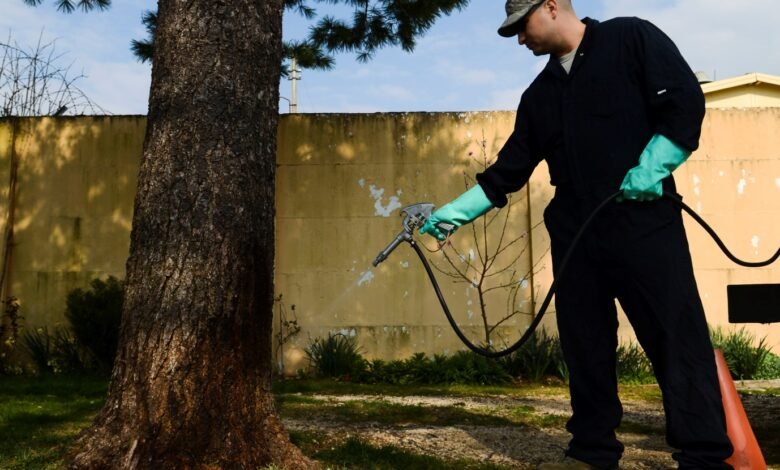
Introduction To Pest Control
Pest control is an essential aspect of maintaining a clean and healthy environment, whether at home or in a business setting. Pests like cockroaches, rodents, termites, and bed bugs can cause significant harm, not only by damaging property but also by spreading diseases. Among these, bed bugs have become a particularly troublesome issue for many, leading to an increased demand for specialized bed bug treatment solutions. This article explores the various aspects of pest control, with a focus on preventing infestations, the importance of professional services, and effective treatment methods, including for bed bugs.
Importance of Pest Control
Pest control is critical for several reasons. First, it ensures a safe living environment. Pests are known carriers of diseases; for example, rats and cockroaches can spread harmful bacteria like E. coli and salmonella, which can lead to food contamination and serious health issues. Additionally, termites and rodents are notorious for causing extensive damage to property, sometimes leading to costly repairs.
Effective pest control also enhances peace of mind. The sight of a cockroach or a mouse can cause considerable distress and discomfort. A home or business free from pests is not only cleaner but also more comfortable and welcoming for residents, guests, or customers.
Common Pests and Their Threats
1. Cockroaches
Cockroaches are resilient creatures that thrive in warm, moist environments. They are not only unsightly but also carry bacteria that can lead to serious health risks, such as food poisoning and allergic reactions. They can invade kitchens, bathrooms, and dark areas where food is stored.
2. Rodents
Rodents like rats and mice are highly destructive pests. They chew through wires, insulation, and even walls, which can create fire hazards or compromise the structural integrity of a building. Rodents are also known to spread diseases, including leptospirosis and hantavirus.
3. Termites
Termites feed on wood and other cellulose-based materials. An infestation can go unnoticed for years, leading to severe structural damage. Homeowners often discover the problem when it’s too late, requiring expensive repairs.
4. Bed Bugs
Bed bugs are small, parasitic insects that feed on human blood. They are notorious for being difficult to eradicate and can spread rapidly through infested mattresses, furniture, and even clothing. This makes bed bug treatment a priority for those who experience infestations.
Bed Bug Treatment: Tackling a Common Problem
Bed bug treatment have become a growing concern in recent years due to their ability to hide in tiny cracks and crevices and their resistance to many over-the-counter pest control solutions. These tiny creatures are typically found in bedding, mattresses, and upholstered furniture, and they feed on the blood of humans while they sleep.
Signs of Bed Bug Infestation
Identifying a bed bug infestation early is key to successful bed bug treatment. Some signs of bed bugs include:
- Bite Marks: Small, red, and itchy bite marks often appear on the skin, typically in clusters or lines.
- Blood Stains on Sheets: Bed bugs leave tiny blood spots on sheets or mattresses after feeding.
- Dark Spots: These are bed bug excrement, often found in the seams of mattresses or on other soft furniture.
- Bed Bug Shells: As bed bugs grow, they shed their skins. Finding these small, brown shells is a sign of an infestation.
Methods of Bed Bug Treatment
When it comes to effective bed bug treatment, there are several approaches homeowners and pest control professionals can take:
- Chemical Treatments: Insecticides and pesticides are the most common methods used to eliminate bed bugs. These are usually applied to affected areas, including mattresses, box springs, and baseboards. Some products offer residual effects, meaning they continue killing bed bugs for weeks after application.
- Heat Treatment: One of the most effective methods of bed bug treatment is heat. Bed bugs cannot survive temperatures above 120°F (49°C). Professional pest control companies often use specialized heating equipment to raise the temperature of the affected area, killing bed bugs and their eggs.
- Steam Treatment: Steam cleaning is another option for bed bug treatment, particularly in areas where chemicals may not be appropriate. Steam penetrates deep into cracks, crevices, and fabrics, killing bed bugs on contact.
- Vacuuming: While not a complete solution, vacuuming can help reduce the number of bed bugs in an infested area. Focus on seams in mattresses, along baseboards, and in furniture cracks.
- Encasement: Enclosing mattresses and box springs in bed bug-proof covers can trap any existing bugs and prevent new infestations. This is an important preventative measure after treatment.
- Professional Pest Control Services: Due to the difficulty of completely eradicating bed bugs, many homeowners opt to hire professional pest control services. These professionals have access to more powerful insecticides and specialized equipment, such as thermal and cryonite treatments, which use extreme temperatures to kill bed bugs without chemicals.
Preventative Measures in Pest Control
Prevention is often more effective and less costly than dealing with a full-blown infestation. Here are some preventive measures to protect your home or business from pests:
1. Regular Inspections
Regular inspections of your home or workplace, especially in areas prone to moisture or where food is stored, can help detect early signs of pest activity. Professional pest control companies offer inspection services that identify vulnerable areas and recommend prevention strategies.
2. Proper Waste Management
Proper disposal of garbage, particularly food waste, is crucial for pest control. Pests like cockroaches and rodents are attracted to food scraps. Ensure garbage is sealed in containers and disposed of regularly.
3. Seal Entry Points
Many pests, including bed bugs, rodents, and cockroaches, can enter a home or building through small cracks and gaps. Sealing these entry points around windows, doors, and the foundation is an essential preventive step.
4. Declutter
Clutter provides hiding spots for pests like bed bugs and rodents. Decluttering your space, particularly around sleeping areas, can reduce the likelihood of infestations.
5. Monitor and Protect Food Storage
Store food in sealed containers and clean up any spills immediately. Pests, especially ants and cockroaches, are drawn to food crumbs and sugary substances.
Choosing the Right Pest Control Service
While many DIY pest control methods are available, hiring a professional pest control service can offer several advantages, particularly for stubborn infestations like bed bugs. Here are a few things to consider when selecting a pest control company:
1. Experience and Expertise
Choose a company with experience in dealing with a wide range of pests, including bed bugs. The technicians should be knowledgeable about the latest methods and technologies used for bed bug treatment and other pest control services.
2. Safety and Environmental Considerations
Ensure that the company uses safe, eco-friendly pesticides and methods that won’t harm humans, pets, or the environment. Look for companies that provide green or organic pest control options.
3. Guarantees and Follow-ups
Many reputable pest control companies offer guarantees on their services, ensuring that if the pests return within a certain period, they will provide additional treatment at no extra cost. Follow-up visits are crucial for ensuring that pests like bed bugs are entirely eradicated.
4. Customer Reviews and Recommendations
Read customer reviews and ask for recommendations from friends or family members. A good pest control service will have a solid reputation for effectively eliminating pests and providing excellent customer service.
Conclusion
Pest control is a critical aspect of maintaining a safe and comfortable home or business environment. From termites and cockroaches to the increasingly common bed bug infestations, pests pose both health risks and structural dangers. Preventative measures, such as proper waste management, sealing entry points, and regular inspections, are essential for keeping pests at bay.
When it comes to bed bug treatment, homeowners and businesses face unique challenges due to the resilience of these pests. However, with effective treatment options like heat, chemical applications, and professional pest control services, bed bug infestations can be managed and eradicated.
For a long-lasting solution to pest problems, it’s advisable to work with a professional pest control service. These experts can provide comprehensive solutions tailored to your specific needs, ensuring your home or business remains pest-free for the long term.



